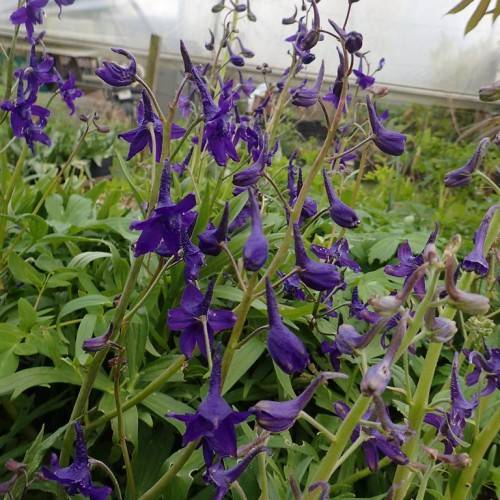
dwarf larkspur
Delphinium tricorne
Cycle:
Herbaceous Perennial
Watering:
Average
Hardiness Zone:
4 - 7
Flowers:
Flowers
Sun:
Full sun
Leaf:
Yes
Growth Rate:
Low
Maintenance:
Moderate
Poisonous To Humans:
Yes
Poisonous To Pets:
Yes
Drought Tolerant:
Yes
Invasive:
Yes
Care Level:
Medium
watering
Water dwarf larkspur about every 1 to 2 weeks (or when soil is dry to the touch an inch below the surface). Water it in the morning, so the foliage has time to dry out during the day and this will help to prevent diseases from developing. Keep in mind that too much water is just as damaging to the dwarf larkspur as too little, so make sure you don’t overdo it.
sunlight
Dwarf larkspur (Delphinium tricorne) needs a full sun location to thrive. Provide the plant with at least 6-8 hours of direct sunlight per day for optimum flowering. Plant in a spot that receives full sun in the morning and partial shade in the afternoon to help keep plants from wilting in extreme heat. If planted in a shadier location, the growth will be slower and fewer flowers may bloom.
pruning
Dwarf larkspur should be pruned in late winter or early spring just before new growth begins to appear. Prune back the stems and cut to within 2-3 inches of the ground. In cases where a branch has died back, it can be trimmed back to the root collar. Removing all dead stems and foliage will help to encourage abundant new growth and flowering. Prune out any dead or diseased branches to help prevent the spread of any disease. Remove any old flower heads to promote new growth and flowering. Depending on the cultivar, annual pruning may be necessary to keep your dwarf larkspur in a manageable size.
